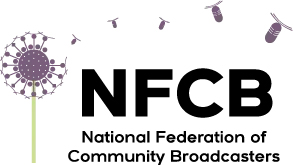"Den de quills and de tr'angle, dey come in, and den Br'er Rabbit pursue on wid de call." ------ from "Brother Fox, Brother Rabbit, and King Deer's Daughter."
The quills are an early American folk instrument that was originally played by slaves. They are panpipes; a set of hollowed tubes of various lengths and widths that are blown across or into by the musician. The pan pipe or pan flute is an ancient instrument that is found in numerous cultures on most continents. The instrument is named after the Greek god Pan who was a musician in Greek mythology. The pan flute is considered to be the first mouth organ and technically is a direct ancestor of the massive pipe organ.
The American version, the quills, most likely had its origins in Africa (they are still played there in southern Africa, Mozambique and Zimbabwe). American slaves were prevented from building and playing drums (too African, too Devilish!) so to accompany their singing and dancing they created a woodwind instrument that could provide rhythm and tones to go along with their singing, shouts and whoops. The earliest historical references to quills being played in America comes from plantation documentary histories and oral histories that date back to the late 1700’s.
Quills are traditionally made of cut cane tubes. Anywhere between two and eights tubes are bound together, with each tube plugged at one end and open at the other. The cane is specifically Arundinaria Gigantea, aka Southern Cane, Switch Cane or Canebrake Bamboo. It’s the only native bamboo found in North American and is common throughout the south where a thick, dense forest of cane is called a ‘Canebrake’ (there are also numerous towns and townships named “Canebrake” throughout the south, and even one in Kern County, California - probably settled by southerners).
There were only a few recordings of quills prior to the 1960’s folk
revival: Big Boy Cleveland (on Gennet 1927), Henry Thomas (on Vocalion
1927 and 1929), and Sid Hemphill and Alec Askew (both recorded by Alan Lomax in
1942 for the Smithsonian).
Texas musician “Ragtime” Henry Thomas (1874-1930?) is probably the best known of
these artists, most likely because some of his songs were re-issued on Harry Smith's "Anthology of American Folk Music." First, Bob Dylan reinterpreted his "Honey Won't You Allow Me One More Chance" on his 1963 album The Freewheelin' Bob Dylan. Then, when the pop band the Lovin' Spoonful was asked to contribute a new song to the soundtrack of the Woody Allen film 'What's
Up Tiger Lilly?' band leader John Sebastian did what any other responsible folkie-turned-pop star would do; he turned to Harry Smith's anthology and came up with Thomas' "Fishin' Blues." In homage to Thomas the Lovin' Spoonful later recorded a track entitled "Henry Thomas," although Ragtime Henry might have had trouble comprehending the honor: It's a short wackie hoedown featuring harmonica, Jew's harp, banjo, some kind of wailing woodwind, and some inscrutably bizarre lyrics. Taj Mahal has also performed "Fishin' Blues" throughout his career; with Ry Cooder and the Rising Sons, as a solo artist, and with the Nitty Gritty Dirt Band. And then there is Thomas' “Bull Doze Blues” which was famously re-worked by Al Wilson and Canned Heat into a "top forty" hit and Woodstock anthem they
called “Goin’ Up The Country." It even featured a flute solo (by veteran
L.A. session musician Jim Horn) that is a note-for-note duplication of Thomas’
original quills performance. Lastly, the Grateful Dead also recorded a Ragtime Henry Thomas song called "Don't Ease Me In," proof that there is some accounting for taste.
On American Pastimes: Some songs
of “Ragtime” Henry Thomas that feature quills: “Bull Doze Blues,” “Fishing
Blues” and “Charmin' Betsy”. Other selections featuring quills by Mike Seeger and the New
Lost City Ramblers, Eden & John’s East River String Band, John Lee, and Allison Williams & Don Flemons (from the Carolina Chocolate Drops).










